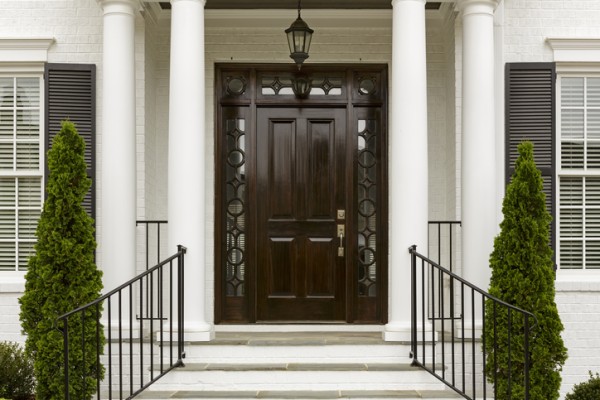
A custom door can transform the look and feel of your home. Whether you’re designing a bold front entry or a bespoke interior statement, custom doors offer creative freedom with size, material, finish and function. But with so many options available, knowing where to start can be tricky.
Here’s what to consider when choosing a custom door—whether it’s for the front of your home, an internal feature or something entirely unique.
When do you need a custom door?
Standard doors typically come in sizes such as 2,040x820mm, but not every space is standard. A custom door might be necessary if:
- Your door opening is taller, wider or shaped differently
- You want to match an architectural style or replicate an original door in a period home
- You need specific thermal, acoustic or security performance
- You want a particular timber species, finish, colour or feature glass
If you’re updating an older home or working with non-standard wall openings, a custom door may be your only option. You’ll also need to factor in the extra cost and lead time compared to standard doors.
Matching materials and performance to purpose
Custom doors allow you to choose the exact material that suits your performance needs, design preferences and budget.
- Solid timber offers a timeless, high-end look and strong acoustic performance. Popular species include Tasmanian oak, blackbutt and spotted gum.
- Steel and aluminium are ideal for contemporary styles and high-security requirements. You can explore more in our guides on steel doors and aluminium doors.
- Fibreglass composite doors are highly durable and weather-resistant, often used in custom entryways. Learn more in our fibreglass doors article.
- Glazed doors can include custom glass panels—clear, tinted, textured or double-glazed—allowing natural light into darker spaces.
If thermal efficiency is a concern, especially for entryways, consider how the door contributes to heat transfer. Materials like timber or insulated fibreglass can help reduce heat loss and meet National Construction Code (NCC) performance requirements.
Designing for style
The beauty of a custom door is in its visual impact. Whether it’s an oversized pivot door, minimalist flush panel or a classic arched entry, customisation means you can match or contrast with your architectural style.
You might choose a carved panel pattern, stained timber grain, or striking black steel with frosted glass inserts. Customisation also applies to hardware—think oversized handles, concealed hinges or electronic smart locks.
Inside the home, a custom door might act as a feature between a living room and dining area or be part of a larger bi-fold system opening to a deck.
Consider door handing and swing
For functional success, design isn’t just about looks—it’s also about movement. Think carefully about the door handing and swing direction early on. It affects how people move through a space, the positioning of furniture and accessibility.
Custom doors can also include specialist opening systems, such as pivot hinges or oversized sliding tracks, that require early planning during framing.
Framing and installation matters
A custom door usually means a custom frame, especially for oversized or non-standard shapes. Ensuring the wall opening is square and correctly sized is essential for long-term durability and ease of operation.
Read our guide to door framing and installation to understand how tolerances, materials and sealing contribute to performance.
Don’t forget to factor in door seals, sills and thresholds—especially if the door is exposed to weather. These elements are essential for thermal efficiency and compliance with AS 2047 (Windows and external glazed doors in buildings) where glazing is involved.
Cost considerations
A custom door will almost always be more expensive than a standard door. Costs vary based on material, size, hardware and finishing. Installation may also be more complex and require skilled tradespeople. As a ballpark, expect:
- Custom interior doors from $500–$1,500
- Custom front doors from $1,500–$5,000 or more
- Additional costs for glass, seals, smart locks or custom finishes
Be sure to get quotes from reputable suppliers and ask about lead times—custom work can take several weeks to manufacture.
Is a custom door right for you?
While a standard door will suit many homes, a custom door can elevate your renovation or build—adding character, improving functionality and boosting long-term value.
If you’re still exploring your options, take a look at our articles on types of door materials, choosing interior doors and how door frames affect performance.
A custom door isn’t just a panel—it’s a statement.





